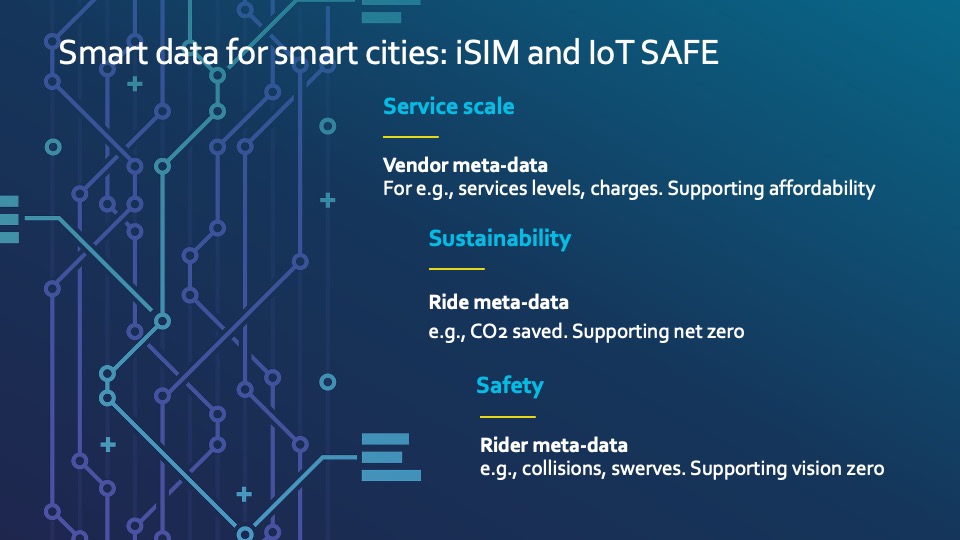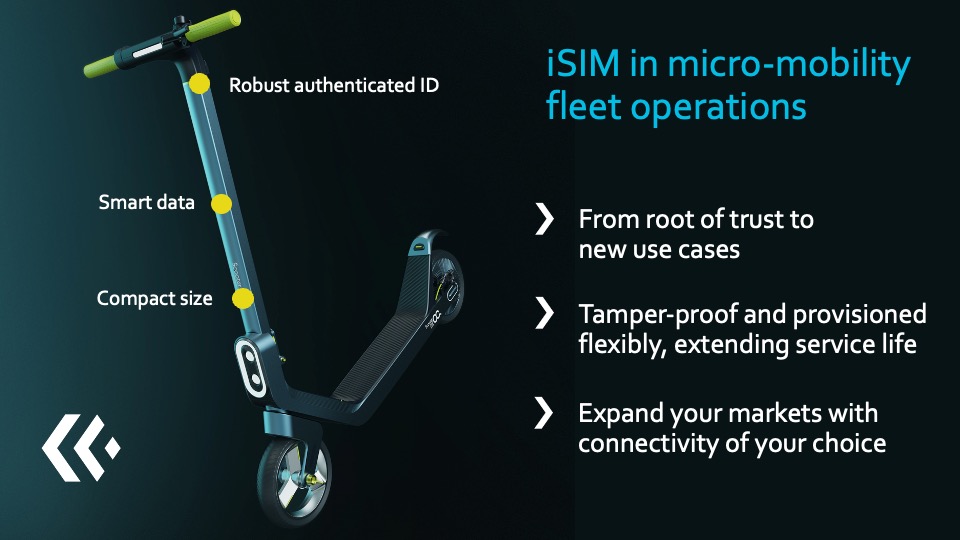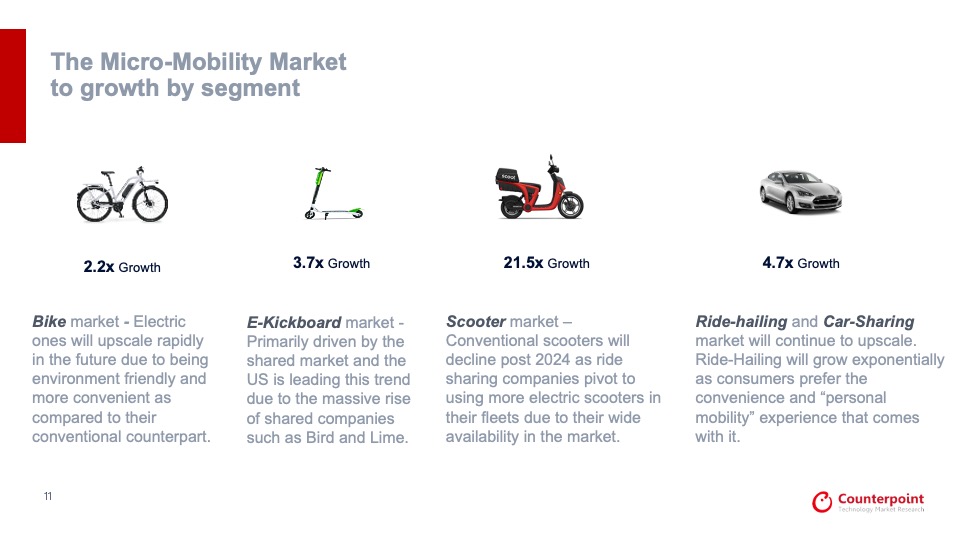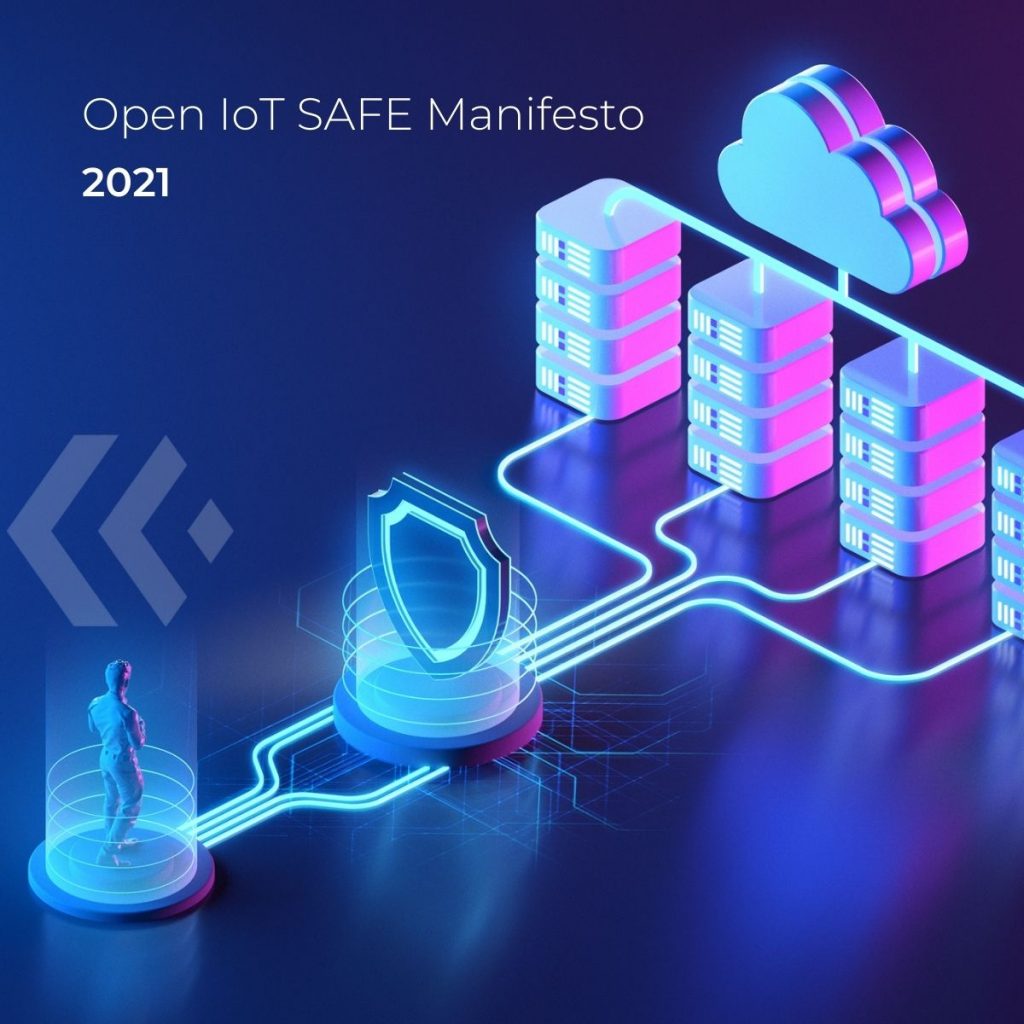
- Resources
- Blog
5 ways iSIMs make transportation IoT sustainable
The transport industry includes every level of mobility – from new micro-mobility solutions in smart cities to more prevalent passenger electric vehicles on our roads and freight to global shipping infrastructure and assets. Cellular IoT contributes in many ways to sustainability outcomes, particularly as we have previously discussed around the path to a zero-carbon economy. In this blog, we focus on the question: what is an integrated SIM (iSIM), and how can it support sustainability with IoT in modern transport systems?
In cellular-connected devices, the SIM (Subscriber Identity Module) contains the credentials or subscription needed to access the service of a particular MNO (Mobile Network Operator) or MVNO (Mobile Virtual Network Operator).
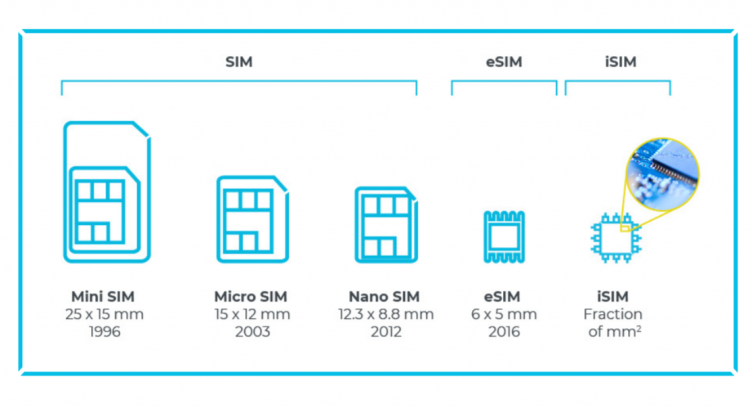


Let’s start by comparing three major SIM technologies in use today:
- Removable or discreet SIMs are familiar to most smartphone users; they are physical cards that users add and remove to load user profiles onto devices. Compared to newer SIM technologies, they take up a lot of device real estate and create higher manufacturing costs. Because anyone can open the SIM tray and access them, they’re also less secure than non-removable SIMs. Since early days of GSM, the SIM have been a property of the MNO or MVNO, with a permanent relationship with the network carrier – often creating a lock-in effect.
- Embedded SIMs (eSIMs) fix many of the security issues explained above. They’re soldered to circuitry within the IoT module, so they take up less space and resist tampering. Remote provisioning allows IoT platforms to update user profiles over the air, so there’s no need to swap out chips. eSIMs are also referred to as eUICC (Embedded Universal Integrated Circuit Card) are these terms are used interchangeably in the market; however, “eSIM” can refer to the entire solution for permanently deploying a reprogrammable solution.
- Integrated SIMs (iSIMs) are even smaller than eSIM—98 percent smaller. An iSIM is built into the IoT module’s microcontroller unit (MCU). This offers a greatly reduced device footprint and smaller electrical bills of material for manufacturers. An iSIM may also operate as a hardware root of trust. That is, it verifies both the user identity and the firmware of the device, defusing a common IoT hacking strategy. Like eSIMs, iSIMs can be provisioned remotely.
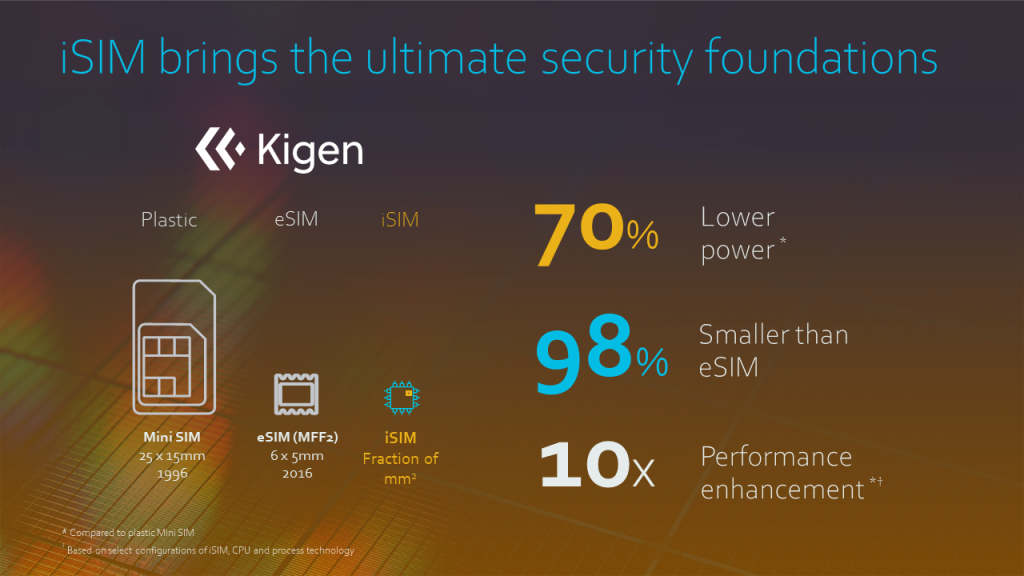


The design differences inherent to iSIMs lead to more sustainable operations for device manufacturers and users alike. Here are five examples of iSIMs’ sustainability benefits for transportation IoT devices:
- Many iSIM IoT modules are designed to connect through low-power networks (LPWAN, etc) While iSIMs can connect through high-volume cellular networks, they can also be optimized for LPWAN connectivity. These networks draw much less power than high-volume cellular networks, so the overall environmental impact of using the device will be lower over time. These devices are built to be energy-efficient.
- By shrinking the electrical bill of materials, iSIMs require minimal resources for manufacturers Fewer components mean less upstream production—and a smaller carbon footprint.
- The remote provisioning capabilities of iSIMs extend product lifetimes considerably
Remote SIM provisioning allows you to change user profiles and networks to extend usability in the field. That enables transportation providers to adapt to changing network environments instead of replacing devices every few years. - Lower production costs bring the sustainability advantages of IoT to a broader audience
Asset tracking in the shipping industry used to be relegated to high-value products like heavy equipment. It was just too expensive to justify tracking less costly shipments. By reducing total costs of ownership for IoT systems, iSIMs scale the sustainability benefits discussed above, so everyone can realize them. - Enhanced iSIM security further broadens the scalability of IoT in the transportation industry Decision-makers in the transportation industry won’t adopt IoT solutions—or use them to reduce emissions—without being sure the data they share is extremely secure. iSIMs provide this security by operating as a hardware root of trust. With the right iSIM partner, your network’s data is safe on the device and authenticated by the network and applications. That trust will lead to more adoption, scaling the sustainable features of IoT across the transportation industry.
What’s next?
Cutting greenhouse gas emissions is not a simple challenge, and it will take more than IoT alone to create a more sustainable transportation industry. But every step we take toward a greener future is worth investigating—and iSIM-powered IoT solutions have a lot to offer the transportation sector right now. 2023 will be the year with more emphasis on smart cities and sustainable mass transport – we’ve looked back at our micro-mobility sector focused webinar with Counterpoint Research, and partners floLIVE and SONY to pull together some quick facts on how iSIM technology can support next stage growth:
Further reading
See our longer article on this topic on IoT for all where we also discuss IoT’s contributions to sustainable transportation.

